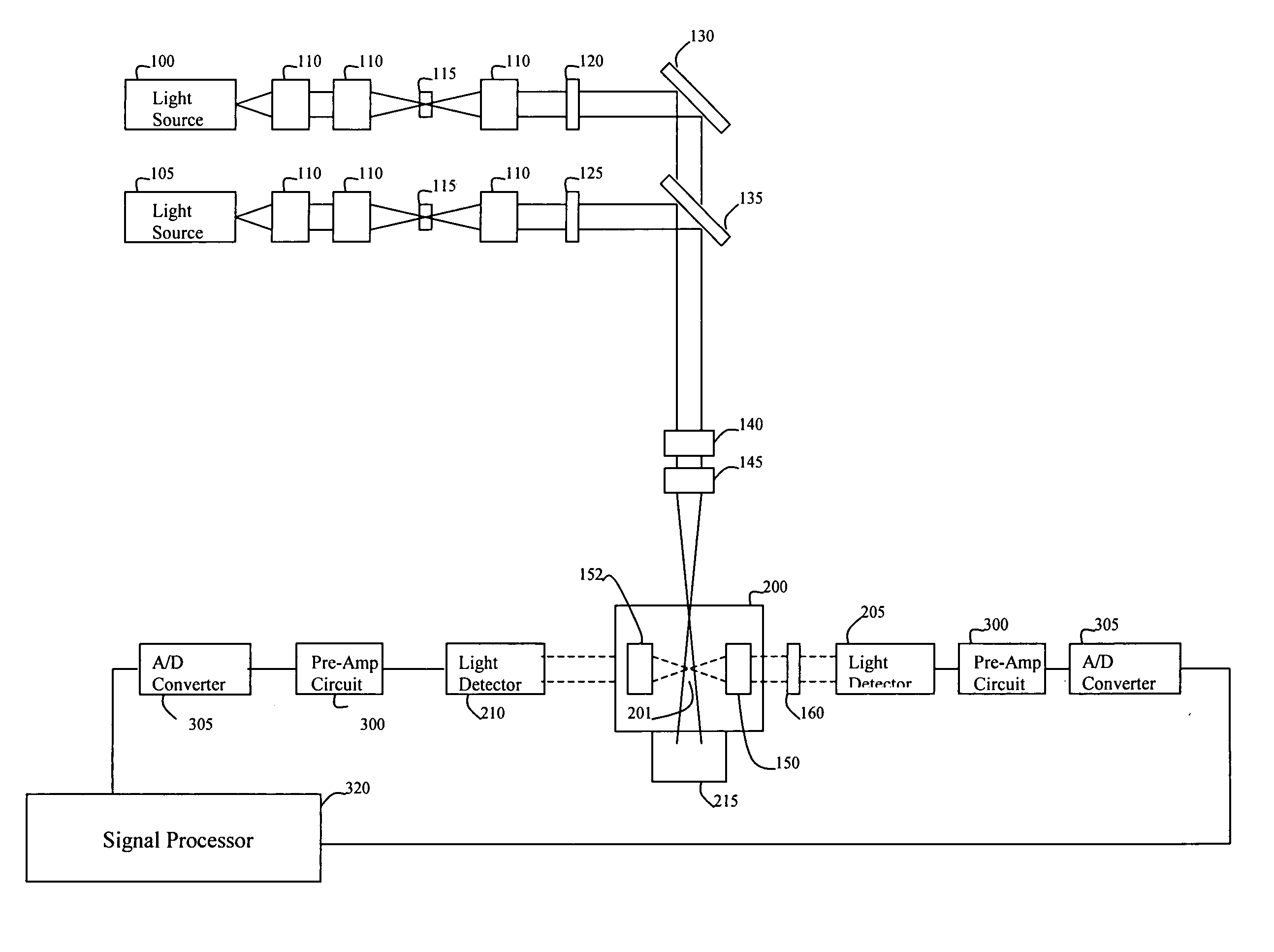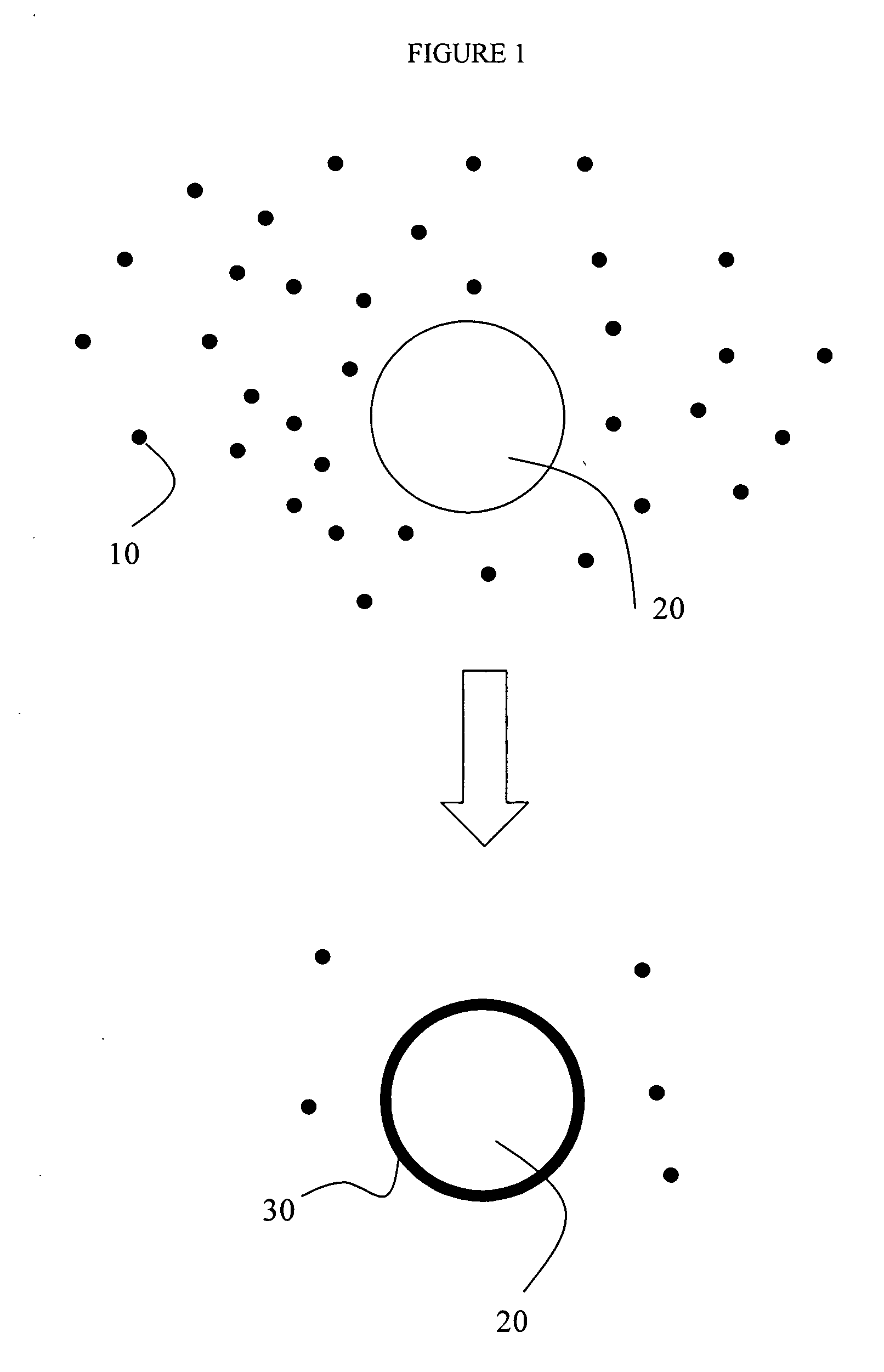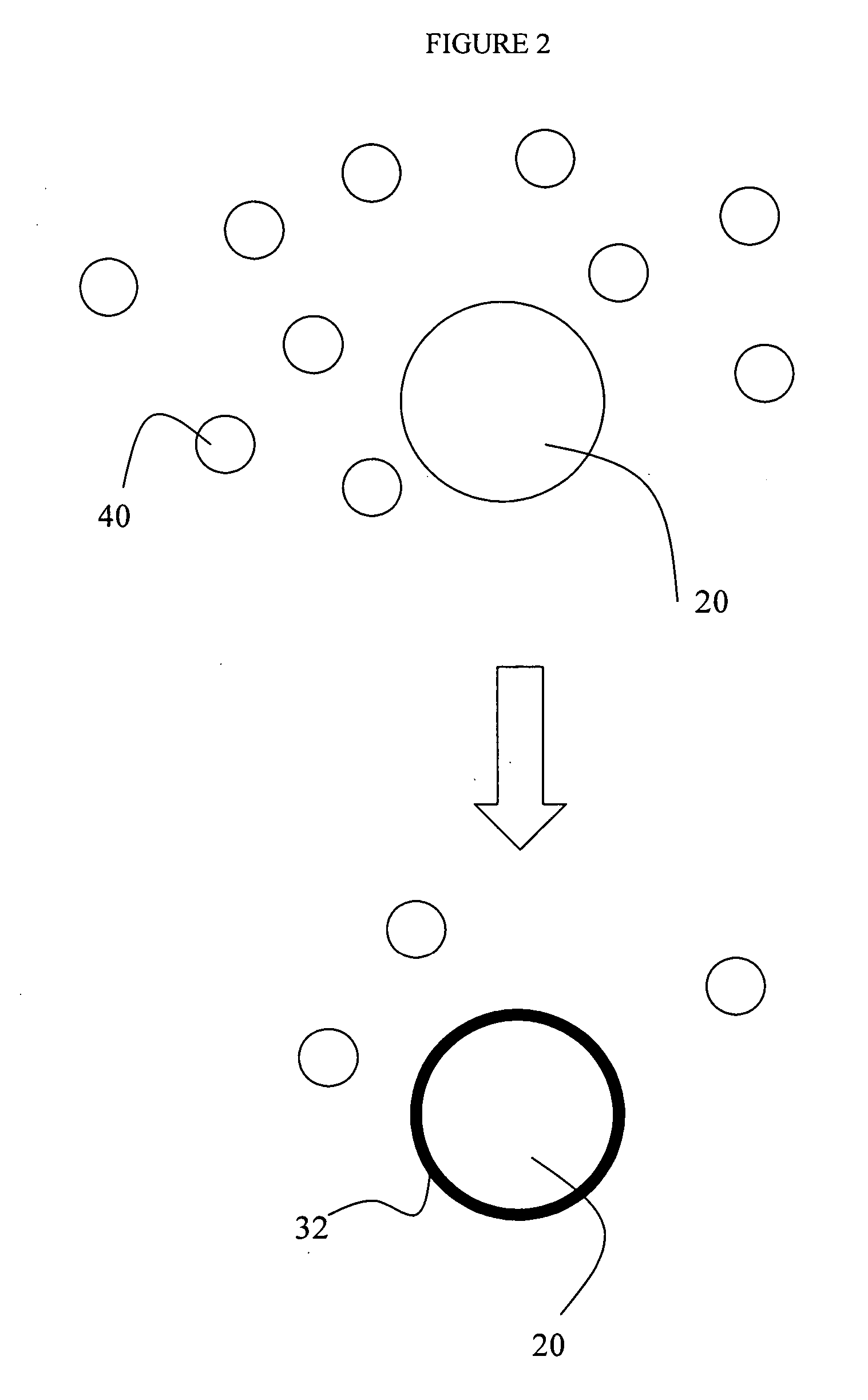Method and system for detecting, classifying and identifying particles
a particle detection and particle technology, applied in the field of methods, can solve the problems of difficult detection and discrimination of biological aerosols, health threats to humans, and lethal impact, and achieve the effect of enhancing the detection of airborne biologicals and enhancing the discrimination of particles of interes
- Summary
- Abstract
- Description
- Claims
- Application Information
AI Technical Summary
Benefits of technology
Problems solved by technology
Method used
Image
Examples
example 1
[0063] Example 1 provides a means for the detection and classification of the following airborne particulates: bacterial cells, bacterial spores, viral aggregates, protein toxin aggregates, mold spores, insect debris, plant cell debris and paper particulates. Two optical reporters are used to discriminate bacterial cells, bacterial spores, viral aggregates, and protein toxin aggregates from mold spores, insect debris, plant cell debris and paper particulates. Calcofluor White 2MR, Blankophor or UVITEX 2B are used to detect particulates containing cellulose or chitin. These dyes are excitable in the violet region, are fast reacting, and fluoresce upon binding to cellulose or chitin. The use of one of these optical reporters provides a means for discriminating mold spores, insect debris, plant cell debris and paper particulates from biological particulates that do not contain cellulose such as bacterial cells, bacterial spores, viral aggregates, and protein toxin aggregates. These dye...
example 2
[0072] Example 2 provides a means for the autofluorescence detection of airborne particulates by exciting particles at 266-300 nm and 350-490 nm and the detection of a protein specific optical reporter using a dye called fluorescamine. Excitation at 266-300 nm provides a means for the detection of aromatic amino acids commonly found in proteins, of which are universally present in biological particles. Excitation at 350-490 nm provides a means for the detection of NADH and flavins which are also commonly found in biological particles. The protein dye fluorescamine is a fast acting fluorogenic dye that when excited at 405 nm provides an intense fluorescence emission from 420-580 nm. The detection system layouts and aerosol sensing configurations described in Example 1 can be applied in the same manner in this example.
[0073] This example shows a benefit for the enhanced discrimination of bacterial cells, bacterial spores, viral aggregates, and protein toxin aggregates from paper part...
example 3
[0074] Example 3 provides a means for the autofluorescence detection of airborne particulates by exciting particles at 405-420 nm and the detection of a protein specific optical reporter using a protein specific dye called fluorescamine. Excitation at 405-420 nm provides a means for the detection of flavins which are also commonly found in biological particles. The protein dye, fluorescamine, is a fast acting fluorogenic that when excited at 405 nm provides an intense fluorescence emission from 420-580 nm. The detection system layouts and aerosol sensing configurations described in Example 1 can be applied in the same manner in this example.
[0075] As with Example 2, Example 3 provides a means for the discrimination of bacterial cells, bacterial spores, viral aggregates, and protein toxin aggregates from paper particulates, a means for enhancing the lower detection limit of single bacterial cells and spores, and a means for the specific detection of protein containing airborne parti...
PUM
| Property | Measurement | Unit |
|---|---|---|
| excitation wavelength | aaaaa | aaaaa |
| excitation wavelength | aaaaa | aaaaa |
| wavelengths | aaaaa | aaaaa |
Abstract
Description
Claims
Application Information
 Login to View More
Login to View More - R&D
- Intellectual Property
- Life Sciences
- Materials
- Tech Scout
- Unparalleled Data Quality
- Higher Quality Content
- 60% Fewer Hallucinations
Browse by: Latest US Patents, China's latest patents, Technical Efficacy Thesaurus, Application Domain, Technology Topic, Popular Technical Reports.
© 2025 PatSnap. All rights reserved.Legal|Privacy policy|Modern Slavery Act Transparency Statement|Sitemap|About US| Contact US: help@patsnap.com



